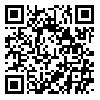Volume 17, Issue 47 (12-2017)
jgs 2017, 17(47): 39-59 |
Back to browse issues page
Download citation:
BibTeX | RIS | EndNote | Medlars | ProCite | Reference Manager | RefWorks
Send citation to:



BibTeX | RIS | EndNote | Medlars | ProCite | Reference Manager | RefWorks
Send citation to:
(2017). PM10 AIR POLLUTION IN MASHAD CITY USING ARTIFICIAL NEURAL NETWORK AND MAKOV CHAIN MODEL. jgs. 17(47), 39-59.
URL: http://jgs.khu.ac.ir/article-1-2859-en.html
URL: http://jgs.khu.ac.ir/article-1-2859-en.html
Abstract: (9540 Views)
Suspended particles management is one of the important issues in controlling the air pollution of cities. These particles cause and develop heart and respiratory diseases in people. Mashhad is considered as one of the main and populous cities of Iran. Because of its climatic conditions and its tourism, the city is at the highest risk of this type of pollution. We attempted to use the multi-layer perceptron (MLP) artificial neural network and a Markov chain model to predict PM10 concentrations the city. We applied hourly data of CO, SO2, PM2.5 and temperature in late March and April 2015. Out of 1488 data series, 1300 data were used for network training and 188 data were used for validation. The results indicated the optimal performance of these methods in predicting of the amount of pollutants and also the probability of occurrence of hours with different quality of contamination. The best MLP artificial neural network model predicted the amount of pollutant particles with a coefficient of determination (R2) 0.88, index of agreement of 0.91 and a mean square error of 2.26. Also, the Markov model with average absolute error predicted about 0.1 percent of the probability of transferring the condition and the continuation of different states of air pollution caused by suspended particles.
Type of Study: Research |
Subject:
climatology
| Rights and permissions | |
 |
This work is licensed under a Creative Commons Attribution-NonCommercial 4.0 International License. |

This work is licensed under a Creative Commons — Attribution-NonCommercial 4.0 International (CC BY-NC 4.0)



